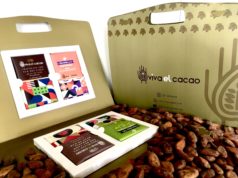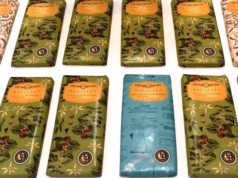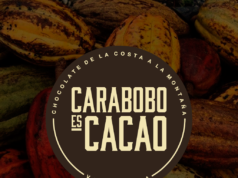Juan Pablo Crespo / @juanpamark
Photos: Courtesy of Ecole Chocolat Professional School of Chocolate Arts
Translator: Noemí Rodríguez
Involved in the art of chocolate since 1981, Pam Williams is one of those references when it comes to fine chocolate in the world. Her opinions, full of experience and knowledge, are globally listened to with great attention. Pam, founder and leader instructor at “Ecole Chocolat Professional School of Chocolate Arts” (Vancouver, Canada), in conversation with Vivaelcacao said she hopes “to continue buying chocolate bars made with fine Venezuelan beans”.
The author of the book “Raising the Bar: The Future of Fine Chocolate“ (2012) and awarded with the Recognition of Excellence by the Association of Fine Chocolate Industry (2011), pointed out that if chocolate lovers do not support farmers and their fine fruit trees, the biodiversity of chocolate flavour will then be lost due to farmers will migrate to other crops.

The master chocolatier believes that the most important challenge of the fine chocolate industry is to educate the consumer in order to have him understands that there is an extensive range of chocolates and there may be wide differences from one another.
Pam likes to encourage creativity and enthusiasm in the process of making chocolate, which she considers that it could be a very sensual activity. She also made a recommendation that will surely be very useful when preparing the food of the gods: “Never assume that you have reached a perfect tempering without first tasting the chocolate, even when using a tempering machine“.
“Ecole Chocolat” offers high quality educational programmes for students from all over the world. Also, in 2006 Pam created chocomap.com to celebrate the chocolate industry which, since 2011, includes a free mobile application “Find Chocolate“, taking advantage of the chocomap.com directory of more than 2,400 chocolate shops.

A special connection
-After more than 30 years involved in the world of chocolate, how does chocolate influence people?
-I think it enables a global connection between people around the world. Chocolate lovers develop a passion for chocolate and as they start learning more about it, they are introduced to new cultures, lands and people. We hope that their passion also leads them to explore chocolate flavour and realize that not all chocolate products created equal when it comes to the chocolate actually tasting really, really good. It is our wish that they eventually become advocates for the trees that bare fine flavour cocoa and the farmers who care for those trees.
-What is the future of fine chocolate?
-This is a complicated question that it took us a whole book: Raising the Bar – the Future of Fine Chocolate, to answer. The short answer is that if we don’t support the farmers who are growing fine flavour chocolate, then they will move on to grow something else and we will lose the biodiversity of chocolate flavour. We need to save those farmers with our wallets – by buying fine flavour chocolate from those chocolatiers and chocolate makers who source cocoa produced on farms that grow the traditional fine flavour cocoas.

-What are the most important challenges of the fine chocolate industry?
-To educate consumers to realize that not all chocolate is the same and that there is a big difference in flavour and enjoyment between a $1 grocery store candy bar and a $10 fine chocolate bar. This is what happened with wine and coffee. Those products that are commodities that developed a cult following for specific types and/or producers of fine flavour. That cult of fine flavour in both wine and coffee created a consumer demand for the best. And that created the small but successful specialty segment in those global, commodity industries.

–What is your opinion about Venezuelan cocoa?
-Almost all the Venezuelan chocolate I have tasted over the years has wonderful flavour. In fact, you just reminded me that I have a bar of Dandelion Chocolate 70% Mantuano, Venezuela, which I am going to get out of my chocolate vault and enjoy this week (last week). And I hope that I will be able to continue to buy chocolate bars made with Venezuelan fine flavour beans.

-Have you worked with Venezuelan cocoa? How has it been that experience?
-I have worked many times with Chocolates El Rey and have found its workability to be very good and the flavours to be consistently excellent. I’m a fan of their white chocolate, which is delicious alone or pairs well with more delicate ingredients.

-What is your main recommendation for a good tempering?
-There are so many tips but these are the three most important: Temperature – get the tempering specifications from the chocolate manufacturer who makes the chocolate you are using, as they know how to achieve the perfect crystallization of their product. Movement – And keep your tempered chocolate mass moving and agitated while you are working. Verification – Test a dab of your tempered chocolate on parchment paper or back of knife/spoon for temper (quick to harden, satin finish and snap) before you start using the chocolate mass – don’t ever assume you have achieved a perfect tempering without proof (even when using a tempering machine).
Pam Williams is a lover and a defender of fine chocolate and of those who work hard with the trees that produce pods with exquisite beans, such as those being used to make the Venezuelan chocolate that has delighted so much Pam’s palate.
@ecolechocolat
info@ecolechocolat.com








